Elbow Broken Symptoms: 6 Signs of an Elbow Fracture
What are the common signs of an elbow fracture? Is my elbow broken? Discover the symptoms, types of elbow fractures, and treatment options in this comprehensive guide.
Signs of an Elbow Fracture: Identifying the Symptoms
Contrary to popular belief, it doesn’t always take a significant impact to fracture the elbow. Sometimes, the full brunt of the symptoms may not manifest until the injury has cooled off, making self-diagnosis challenging. Here are the most common signs of an elbow fracture:
- Sudden sharp pain
- Sharp pain with every attempt to move the joint
- Inability to straighten the elbow
- Swelling and bruising around the elbow area
- Tenderness to the touch
It’s important to note that these symptoms can also occur with other injuries, such as a sprained or bruised elbow. The only way to definitively determine if the elbow is broken is through an X-ray examination by a healthcare professional.
Types of Elbow Fractures: Understanding the Anatomy
There are three main types of elbow fractures:

- Olecranon fractures: These occur at the pointy tip of the elbow, which is not protected by muscles and is exposed to the full force of an impact.
- Distal humerus fractures: This type of fracture happens at the part of the humerus that connects the shoulder to the elbow, and can be the most challenging to treat surgically.
- Radial head fractures: These occur at the part of the elbow that allows for forearm rotation and is connected to the humerus. They are often caused by attempts to break a fall with the arm and are one of the most common types of elbow fractures in children.
Regardless of the specific type, the signs of an elbow fracture are generally the same across all three categories.
Determining if Your Elbow is Broken: The Importance of X-rays
Even the most experienced elbow specialists cannot definitively diagnose a fracture based solely on the patient’s symptoms. An X-ray examination is the only way to confirm if the elbow is broken. While some people may be concerned about the radiation exposure, the likelihood of harm from a limb X-ray is extremely low, about 1 in 1,000,000. Seeking medical attention and getting the necessary imaging is the best way to determine the extent of the injury and the appropriate course of treatment.

Broken Elbow Treatment: Navigating the Options
The vast majority of elbow fractures are treated non-invasively, with the specific approach depending on the type of fracture. Radial head fractures typically require a few days of protection in a sling, followed by exercises to prevent stiffness. Olecranon and distal humerus fractures often require surgical intervention, such as closed reduction percutaneous pinning, open reduction and internal fixation, radial head replacement, or total elbow replacement in severe cases.
In addition to any necessary surgical procedures, pain or anti-inflammatory medication may be prescribed, and physical therapy is usually recommended to help regain full range of motion and strength in the affected elbow.
Preventing Elbow Fractures: Strategies for Safety
While some elbow fractures are unavoidable, there are steps you can take to reduce the risk of sustaining this type of injury. This includes being mindful of your surroundings, using caution when engaging in physical activities, and seeking medical attention promptly if you suspect an injury. By understanding the signs and symptoms of an elbow fracture, you can better identify the issue and seek the appropriate treatment, ultimately promoting a faster and more successful recovery.
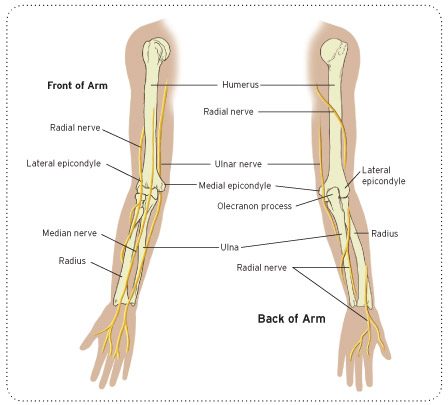
Recognizing the Severity: When to Seek Medical Attention
If you experience any of the symptoms associated with an elbow fracture, it is crucial to seek medical attention as soon as possible. Ignoring the signs or attempting to self-diagnose can lead to further complications and may result in the need for more invasive treatment. By working closely with a healthcare professional, you can ensure that the appropriate steps are taken to address the injury and facilitate a successful recovery.
The Importance of Aftercare and Rehabilitation
Regardless of the type of elbow fracture and the treatment approach, the aftercare and rehabilitation process are crucial for a full recovery. Physical therapy exercises, prescribed by a healthcare professional, can help regain range of motion, strength, and flexibility in the affected elbow. Adhering to the recommended treatment plan and actively participating in the rehabilitation process can significantly improve outcomes and reduce the risk of long-term complications or limitations.

Signs of an Elbow Fracture | Is My Elbow Broken?
A lot of people live under the false presumption that it takes a tremendous amount of force to fracture an elbow. Sure, it sounds logical that it would have to be a noteworthy impact to shatter (or at least crack) bones in your elbow but this is not always the case. Sometimes, you won’t feel the full brunt of symptoms until the injury has cooled off, which makes any self-diagnosis quite difficult.
Here are some common signs of an elbow fracture, a few types of elbow fractures, as well as some tips for treatment. Chances are that you’re wondering whether your elbow is broken or just bruised, but even if it turns out to be a false alarm, this sort of knowledge always comes in handy.
What Are the Symptoms of a Fractured Elbow?
Like with any other fracture, the five most common symptoms of a fractured elbow are:
- Sudden sharp pain
- Sharp pain every time you try to move the joint
- Inability to straighten the elbow
- Swelling and bruising around the elbow area
- Tenderness to touch
Keep in mind that it’s possible to experience some of these symptoms even if your elbow is just bruised. Even more likely, your elbow might be sprained. For instance, even if it’s sprained, dislocated, or bruised, you’ll be unable to straighten it and the pain will accompany every movement. Still, the pain of a broken elbow is incredibly intense.
Even more likely, your elbow might be sprained. For instance, even if it’s sprained, dislocated, or bruised, you’ll be unable to straighten it and the pain will accompany every movement. Still, the pain of a broken elbow is incredibly intense.
How to Know Is My Elbow Broken?
Although we’ve described the pain as intense; the truth is that even the best elbow specialists can’t determine that it’s a fracture based simply on your testimony (not with 100% certainty). In other words, the specialist needs to take a look at the X-rays of your elbow.
A lot of people are afraid of the radiation involved in the procedure but the likelihood of a limb X-ray causing harm (even in the distant future) is 1 in 1,000,000. In other words, this is both a standard procedure and a completely harmless undertaking. Only after getting an X-ray image will the doctors know if your elbow is broken.
What Are Common Elbow Fracture Types?
Generally speaking, there are three major types of elbow fractures:
- Olecranon fractures: These are the fractures of the pointy tip of your elbow.
 The reason why these fractures are common is that they’re not protected by muscles, making them exposed. Also, depending on the impact that caused the fracture, its anatomy increases the odds that it will be the part of your elbow that takes the full brunt of the force.
The reason why these fractures are common is that they’re not protected by muscles, making them exposed. Also, depending on the impact that caused the fracture, its anatomy increases the odds that it will be the part of your elbow that takes the full brunt of the force. - Distal humerus fractures: This is a fracture of the part that connects the shoulder to the elbow. Out of these three types, distal humerus fractures may be the least common but are also the most difficult to treat surgically. How they happen is usually due to a fall onto a bent elbow.
- Radial head fractures: Radial head allows you to rotate your forearm and connects with the humerus. Now, the reason why they are incredibly common is that they usually happen when someone tries to break a fall with their arm. They usually require the least amount of treatment. Also, they’re one of the main reasons why about 10% of all bone fractures in children are elbow fractures.

Remember that signs of an elbow fracture are the same across all three of these types. So, the above-listed information (regarding the types) is only relevant for those who have already been diagnosed and now want to know exactly what they’re dealing with. As a layman, any attempt to try and figure out which of the three types you’re dealing with is futile and you should head to the doctor as soon as possible.
What Is Broken Elbow Treatment Like?
The vast majority of broken elbows are treated non-invasively. Most fractures of the radial head require several days of protection and then motion out of the sling to help keep your elbow joint from getting stiff. Olecranon fractures and distal humerus fracture usually require surgical fixation.
Seeing as how the pain can be quite intense, pain- or anti-inflammatory medication may be prescribed, as well.
Lastly, seeing as how this is a delicate part of your extremities and it will be inactive for a while, you’ll likely be prescribed physical therapy. At the very least, you’ll get a list of exercises that you’ll have to perform, either on your own or under the supervision of a physical therapist.
At the very least, you’ll get a list of exercises that you’ll have to perform, either on your own or under the supervision of a physical therapist.
In a scenario where nothing else is helpful, you might have to undergo elbow fracture surgery. While this is an extreme measure, the three most common types of surgeries performed are:
- Closed reduction percutaneous pinning.
- Open reduction and internal fixation
- Radial head replacement
- Total elbow replacement
Once again, these depend on the type of injury. For instance, a total elbow replacement surgery only takes place if your elbow has suffered severe damage. Just keep in mind that surgery (and the serious injury that made it necessary) will also mean that the healing process will take longer. Speaking of which…
How Long Does a Fractured Elbow Take to Heal?
Again, this completely depends on the injury, as well as some subjective factors but, generally speaking, the injury should heal in 6 to 12 weeks.:max_bytes(150000):strip_icc()/3232847_color1-5c0191cec9e77c00013b3053.png)
During the first 3 weeks, you will likely be advised to be gentle. If there are some elbow exercises, they’ll be incredibly light. In this stage, your priority will be to learn how to handle pain and swelling and getting your motion back.
After 2-3 weeks, your exercises should become a tad more ambitious. This means that you should aim for a full movement. The key thing to pay attention to is the straightening of your elbow. How well you do in this stage will greatly determine the recovery time for a broken elbow.
After 6 to 12 weeks, if you’re lucky, the treatment has gone right, and you’ve been hard-working with your physiotherapy, you should start getting back to normal.
Wrap Up
Recognizing signs of an elbow fracture is detrimental to being able to react in time. While the pain is intense, under the influence of adrenaline you might not feel the full brunt of the injury right away.![]() The best piece of advice that we can give is to avoid underestimating an injury or just assuming that you’ll be able to walk it off.
The best piece of advice that we can give is to avoid underestimating an injury or just assuming that you’ll be able to walk it off.
Your safest course of action is to find an expert in elbow fractures at the Orthopedic Institute of New Jersey and get their opinion.
Broken Elbows in Children | Boston Children’s Hospital
Listen
A broken elbow is a break, at or near the elbow joint, in one or more of the three arm bones that form the joint: the humerus (upper arm bone), radius, and/or ulna (forearm bones).
Pediatric elbow fractures are usually the result of an impact injury, like in a direct blow, or when a child uses his outstretched arm to break a fall. A fractured elbow is typically treated by splinting or casting the area for about four weeks.
What are the types and locations of elbow fractures?
Because the elbow is such a complex joint, one way to classify elbow fractures is by their location in or around the joint. Some elbow fracture locations include:
Some elbow fracture locations include:
- Above the elbow (supracondylar humerus fracture): Occurs when the upper arm bone (humerus) breaks just above the elbow. This is the most common elbow break in younger children.
- At the elbow “knob” (condylar fracture): A break through one of the bony knobs (lateral and medial condyles) at the end of the humerus.
- At the elbow tip (epicondylar fracture): A break at the end of the humerus, near the bony knob that makes up the tip of the elbow. This is common in pre- and early-adolescent children.
- At the growth plate (physeal fracture): A break that occurs at, into, or across a growth plate (soft pieces of developing cartilage tissue from which bone grows)
- At the elbow end of the radius (radial neck fracture): A dislocation of one of the joints of the elbow can accompany one of the above fractures, and if present, will be addressed at the same time as treatment of the fracture.

Learn more about the different types of fractures in children.
Broken Elbow | Symptoms & Causes
What are the signs and symptoms of broken elbows in children?
- pain or swelling in the elbow or forearm
- an obvious deformity in the elbow or forearm
- difficulty moving, flexing, or extending the arm normally
- warmth, bruising, or redness at or near the elbow
What causes broken elbows in children?
A bone breaks when there’s more force applied to the bone than it can withstand. These breaks can occur from falls, trauma, or a direct blow. Most childhood fractures result from mild to moderate (rather than severe) trauma that happens while children are playing or participating in sports, with the rate of fractures peaking in adolescence, especially among boys.
Broken Elbow | Diagnosis & Treatments
How are broken elbows in children diagnosed?
To diagnose broken elbows in children, the doctor will carefully examine the injured area for tenderness, redness, and swelling.
One or more of the following imaging techniques may also be used to get pictures of the broken bone and to check for damage to muscles or blood vessels.
- X-ray: The main tool used for diagnosing a broken bone. This painless test uses small amounts of radiation to produce images of bones onto film. After the doctor puts the pieces of the broken bone in the right position, an x-ray can also help determine whether the bones in the arm are healing in the proper position.
- Magnetic resonance imaging (MRI): Some fractures (such as stress fractures) don’t show up on an x-ray until a few weeks after the bone starts hurting. An MRI is a diagnostic procedure that uses a combination of large magnets, radio frequencies, and a computer to produce detailed images of organs and structures within the body. These types of tests are more sensitive than x-rays and can pick up smaller fractures before they get worse.
- Computed tomography scan (CT, CAT scan): A diagnostic imaging procedure that uses a combination of x-rays and computer technology to produce cross-sectional images (often called slices), both horizontally and vertically, of the body.

- Bone scan: A painless imaging method that uses a radioactive substance to evaluate bones and determine the cause of pain or inflammation. Bone scans are also useful for detecting stress fractures and toddler’s fractures, which can be hard to see on x-rays.
How are broken elbows in children treated?
The treatments for broken elbows in children depend on the location and severity of the fracture as well as the child’s age and overall health.
In most cases, broken elbows in children are treated with a splint or cast, which immobilizes the injured bone(s) to promote healing and reduce pain and swelling. Splints and casts may also be put on after surgical procedures to ensure that the bone is protected and in the proper alignment as it begins to heal.
Splints are used for minor breaks. Splints support the broken bone on one side and immobilize the injured area to promote bone alignment and healing. Splints are often used in emergency situations to hold a joint in a steady position during transportation to a medical facility.:max_bytes(150000):strip_icc()/armpainfinal-01-5c86a3fa46e0fb0001a0bebd.png)
Casts are stronger than splints and provide more protection to the injured area. They hold a broken bone in place while it heals by immobilizing the area above and below the joint. Casts have two layers: a soft inside layer that rests against the skin and a hard outer layer that prevents the injured bone from moving.
Some common types of casting for broken elbows include:
- Short arm casts extend from the elbow to the hand and are used for forearm or wrist fractures or to hold the arm in place after surgery.
- Long arm casts extend from the upper arm to the hand and are used for upper arm, elbow, or forearm fractures. They are also used to hold the arm in place after surgery.
Other treatments for broken elbows include:
- Surgery: May be needed to put broken bones back into place. A surgeon may insert metal rods or pins located inside the bone (internal fixation) or outside the body (external fixation) to hold bone fragments in place to allow alignment and healing.
 This is done under general anesthesia.
This is done under general anesthesia. - Traction: Corrects broken or dislocated bones by using a gentle and steady pulling motion in a specific direction to stretch muscles and tendons around the broken bone. This allows the bone ends to align and heal, and in some cases, it reduces painful muscle spasms.
- Closed reduction: A nonsurgical procedure used to reduce and set the fracture. Using an anesthetic (typically given through an IV in the arm), the doctor realigns the bone fragments from outside the body and holds it in place with a cast or splint.
- Physical therapy: May be needed to strengthen the arm, restore range of motion, and help the arm return to full function after treatment and/or casting.
Broken Elbow | Programs & Services
Centers
Programs
Broken Elbow | Contact Us
Fracture of the ulna: symptoms, treatment, rehabilitation
Content
- 1 How to correctly diagnose and treat a fracture of the ulna: symptoms and methods of recovery
- 1.
 1 Fracture of the ulna: what is it?
1 Fracture of the ulna: what is it? - 1.2 Fracture of the ulna: symptoms, treatment, rehabilitation
- 1.2.1 Symptoms of a fracture of the ulna
- 1.3 Types of fracture of the ulna
- 1.4 Diagnosis of a fracture of the ulna
- 1.5 Treatment of a fracture of the ulna
- 1.5.1 Conservative treatment
- 1.5.2 Surgical treatment
- 1.5.3 Rehabilitation
- 1.6 Surgical treatment of the fracture of the ulna: features
- 1.7 Rehabilitation after a fracture of the ulna
- 1.8 Recovery functions of the elbow joint
- 1.9 Possible complications and prevention of fracture of the ulna
- 1.9.1 Possible complications
- 1.9.2 Prevention
- 1.10 Related videos:
- 1.11 Q&A:
- 1.11.0.1 What causes a fracture of the ulna?
- 1.11.0.2 What symptoms indicate a fracture of the ulna?
- 1.11.0.3 How is a fracture of the ulna diagnosed?
- 1.
 11.0.4 How is a fracture of the ulna treated?
11.0.4 How is a fracture of the ulna treated? - 1.11.0.5 How long does it take to recover from an ulna fracture?
- 1.11.0.6 What are the possible complications of a fracture of the ulna?
- 1.
Fracture of the ulna – a typical upper limb injury, symptoms and treatment. Get information about the causes of damage, symptoms and methods of treatment of a fracture on the doctor’s consultation website.
The elbow joint is a complex structure made up of three bones: the ulna, radius and metacarpal. A fracture of the ulna is one of the most common injuries that can occur due to a fall on the arm, a blow, or a large load on the hand. This is an injury in which the ulna is completely or partially torn. Once a fracture has occurred, a number of characteristic symptoms appear that help the doctor make a diagnosis and prescribe treatment.
Symptoms of a fractured ulna may include tenderness and swelling in the elbow, inability to fully extend or flex the arm, redness, and bruising.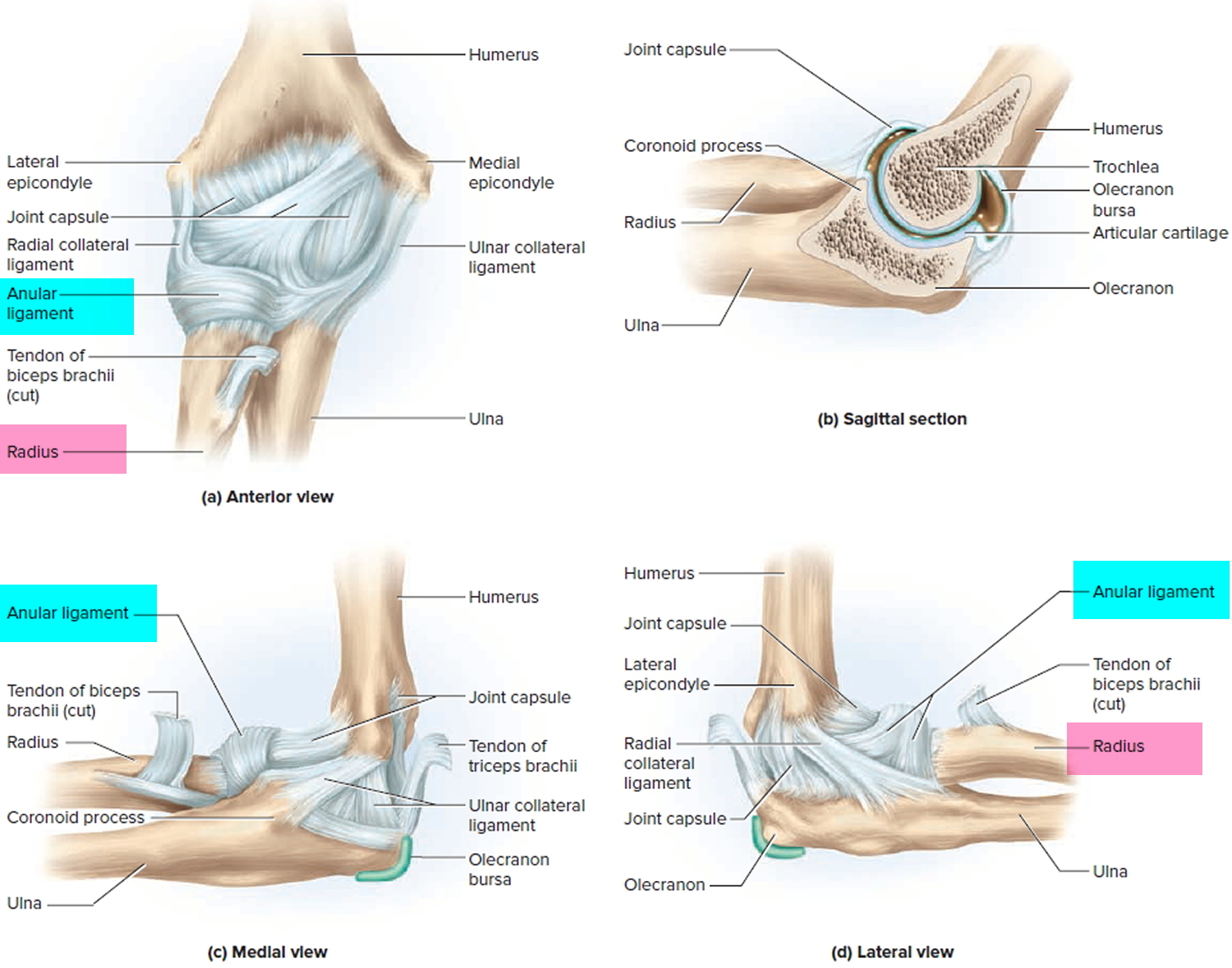 Depending on the severity of the injury, the fracture may be non-displaced or with an intra-articular or displacement fracture.
Depending on the severity of the injury, the fracture may be non-displaced or with an intra-articular or displacement fracture.
In this article we will talk about how to make a diagnosis, conduct treatment and subsequent rehabilitation in case of a fracture of the ulna. We will also look at precautions that can help you avoid this injury and get the best recovery from it.
Fracture of the ulna: what is it?
Ulna Fracture is an injury in which the ulna is broken. The ulna is one of the three bones that make up the elbow. It connects the humerus and radius.
A fracture of the ulna can be caused by a variety of factors, such as a fall on the arm, a blow, or a backward bend. Many athletes and active people experience this injury.
Symptoms of a fractured ulna may include pain, swelling, bruising, and limited movement at the elbow. If you suspect an ulnar fracture, you should see a doctor for proper treatment and rehabilitation.
Fracture of the ulna: symptoms, treatment, rehabilitation
Symptoms of a fracture of the ulna
Fracture of the ulna is a serious injury that is accompanied by a number of characteristic symptoms:
- Swelling and pain 9 0080 in the elbow area.
 The pain may be intense and get worse when you try to move.
The pain may be intense and get worse when you try to move. - Movement restriction in the wrist and shoulder joint. The victim cannot fully extend or bend the arm.
- Misshaped elbow . A bulge or pit may form at the site of injury.
- Palpation of the ulna is painful.
- In the event of a serious injury, there may be circulatory problems in the hand, blue and numbness of the fingers.
If you suspect a broken ulna, be sure to seek medical attention. Self-diagnosis and self-treatment can only worsen your condition and lead to complications.
Types of fracture of the ulna
Fracture of the head of the ulna: occurs when a person falls on an outstretched arm or when a strong blow occurs in the crook of the elbow. The main symptoms are illness, swelling, and restriction of movement. It can take a long time on its own.
Fracture of the neck of the ulna: occurs when a strong blow to the elbow or when falling on a straight arm. Has symptoms such as severe elbow pain, swelling, fever, and restricted movement. Requires compulsory treatment.
Has symptoms such as severe elbow pain, swelling, fever, and restricted movement. Requires compulsory treatment.
Fracture of the body of the ulna: occurs when falling on a bent arm, injury in the flexion of the elbow. The consequences are manifested by pain in the elbow when moving and the impossibility of flexion and extension of the arm. Treatment depends on the extent of bone damage and usually requires temporary immobilization of the limb.
Ulna Fracture Diagnosis
An ulna fracture is a serious injury that requires immediate medical attention. Diagnosis of an ulnar fracture begins with an examination and physical examination, as well as taking the patient’s history.
Additional tests such as x-ray photography, computed tomography or magnetic resonance imaging may be ordered to confirm the diagnosis. These studies allow a more detailed study of the degree of damage to the bone and assess the condition of the surrounding tissues.
Your doctor may also order electromyography (EMG) to determine the extent of muscle and nerve damage in the elbow joint. This will help to assess not only the degree of bone damage, but also its possible consequences.
This will help to assess not only the degree of bone damage, but also its possible consequences.
- X-ray photography is the most common research method for diagnosing ulna fractures. It allows you to accurately determine the presence of a fracture, its type and degree of complexity.
- Computed tomography is a more accurate method of visualizing bone and surrounding tissues. It can be prescribed in cases where the x-ray method does not allow a sufficiently accurate assessment of the state of damage.
- Magnetic resonance imaging – used if there are doubts about the condition of soft tissues. This method is highly accurate and allows even small damages to be assessed.
Depending on the degree of damage to the bone and surrounding tissues, the doctor will prescribe the appropriate treatment and rehabilitation plan.
Treatment of a fracture of the ulna
Non-surgical treatment
In case of an incomplete or moderate fracture of the ulna, non-surgical treatment may be used.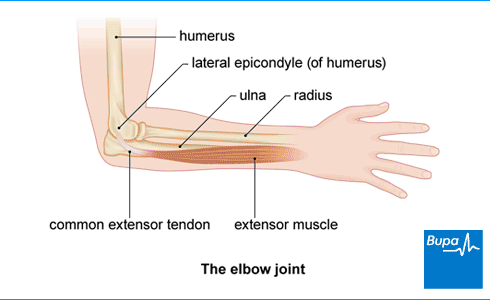 This includes wearing a cast, limiting arm movement, and taking painkillers to relieve pain. The duration of treatment depends on the degree of damage and can last up to 6-8 weeks.
This includes wearing a cast, limiting arm movement, and taking painkillers to relieve pain. The duration of treatment depends on the degree of damage and can last up to 6-8 weeks.
Surgery
A complete or displaced fracture of the ulna may require surgery. The operation may involve fixing the bone with plates, screws, or pins. Recovery from surgery can take several months.
Rehabilitation
Rehabilitation after treatment of a fracture of the ulna includes exercises to restore strength and flexibility of the arm, improve blood circulation and reduce swelling. Physical therapy can also help restore full range of motion. Rehabilitation can take several months and should be carried out under the supervision of a specialist.
Surgical treatment of a fracture of the ulna: features
Fracture of the ulna is a serious injury that occurs when a fall on the arm or blow. Conservative treatment may not give the desired results, so in some cases surgery is required.
Features of surgical treatment:
- The operation is performed under general anesthesia.
- Surgeons use different methods of fixation of the ulna: screws, plates, frames, etc.
- The choice of method depends on the type and severity of the fracture.
- Surgical treatment helps to quickly restore the functionality of the hand and prevents possible complications.
- After the operation, the patient is prescribed a rehabilitation program that will help to quickly return to the old life.
Indications for surgery:
- An undisplaced fracture that can lead to dysfunction of the elbow.
- A displaced fracture that cannot be managed conservatively.
- Avulsion of bone fragments or damage to blood vessels and nerves.
Features of the postoperative period:
- The patient is prescribed analgesics for pain.
- The arm must be in a cast for 2-4 weeks.

- After removing the cast, it is necessary to start therapeutic exercises under the supervision of a specialist.
- The total rehabilitation period is from 2 to 4 months, depending on the severity of the fracture and the speed of recovery of the body.
Rehabilitation after a fracture of the ulna
As a rule, a fracture of the ulna requires a long rehabilitation in order to restore the full functionality of the hand. However, with the help of special exercises and procedures, this process can be significantly shortened.
The first stage of rehabilitation is the wearing of a plaster cast on the broken arm. It prevents movement and helps the bone heal. After removing the bandage, the next stage begins – physical exercises, which are aimed at restoring movement in the elbow and the strength and flexibility of the arm. Classes are conducted under the supervision of a rehabilitologist and include exercises with and without weights, stretching and massage.
Also, the rehabilitation process may include treatment by specialists such as masseurs, physiotherapists and kinesiologists. They can prescribe individual exercises that will help restore the functionality of the hand, avoid tendon contractures, and most importantly, return faster results than without medical intervention.
The main principle of rehabilitation is regular exercise and supervision by specialists. Recovery success depends on many factors such as age and health. However, following all the recommendations and exercises will make the process as effective as possible and will allow you to return to the previous activity of the hand as soon as possible.
Restoration of the functions of the elbow joint
After a fracture of the ulna, it is important to carry out rehabilitation measures to restore the functions of the elbow joint. They are aimed at strengthening muscles and ligaments, expanding movements in the joint, improving blood circulation and preventing the early consequences of injury.![]()
A set of exercises may include exercises with various sports equipment such as balls and dumbbells. It is important to carry out exercises under the supervision of a specialist and not overload the injured joint.
Physiotherapy treatments such as electrophoresis, magnetotherapy and ultrasound therapy may be prescribed to speed up the healing process and reduce pain. They help improve blood flow, reduce swelling, restore muscles and ligaments.
It is also important to maintain a healthy diet and take the necessary vitamins and minerals to strengthen bones and muscles. Here you need to consult a doctor.
Full recovery of the elbow joint may take several months, but with proper rehabilitation measures, full recovery and return to the previous active life can be achieved.
Possible complications and prevention of ulnar fracture
Possible complications
A fracture of the ulna can lead to a number of complications, such as:
- Dysfunction of the hand and fingers;
- Pain and swelling in the area of the fracture;
- Developmental delay in cases of severe fracture in children;
- Persistent pain and discomfort in the arm and elbow if not treated in time;
- Deformation of the bone in case of incorrect fusion.

Prevention
To prevent a fracture of the ulna, you should:
- Avoid risky sports and traumatic stress on the arm and elbow;
- Maintain a healthy lifestyle with proper nutrition and exercise;
- At the slightest pain and discomfort in the arm and elbow, consult a doctor for preventive examination and treatment.
In addition, it is important to follow safety rules at work and at home, not to make sudden movements and avoid injuries.
Related videos:
Q&A:
What causes an ulna fracture?
A fracture of the ulna can be caused by trauma, such as a fall on an outstretched arm or a blow. It can also be a consequence of osteoporosis in the elderly.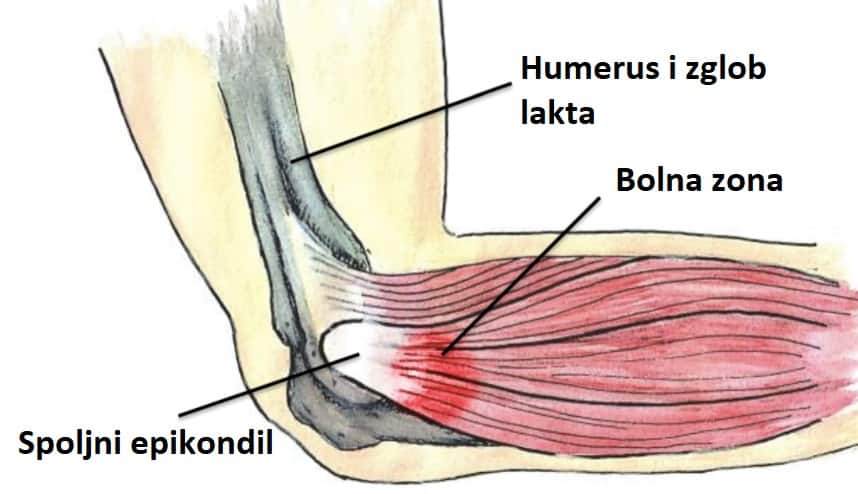
What symptoms indicate a fracture of the ulna?
Symptoms of an ulnar fracture may include pain in the elbow, swelling, bruising, impaired mobility of the arm, and inability to flex or extend the elbow.
How is a fracture of the ulna diagnosed?
An x-ray or computed tomography is used to diagnose an ulna fracture. A medical specialist will review the images to determine if there is a fracture.
How is a fracture of the ulna treated?
Treatment for a fractured ulna may include immobilizing the arm with a cast, drug therapy to relieve pain and improve bone healing, and rehabilitation that includes physical therapy and exercises to restore elbow joint motion.
How long does it take to recover from an ulna fracture?
The rehabilitation process after a fracture of the ulna can take from several weeks to several months, depending on the degree of injury and the individual characteristics of the patient. However, the sooner treatment and rehabilitation begin, the more effective the result will be.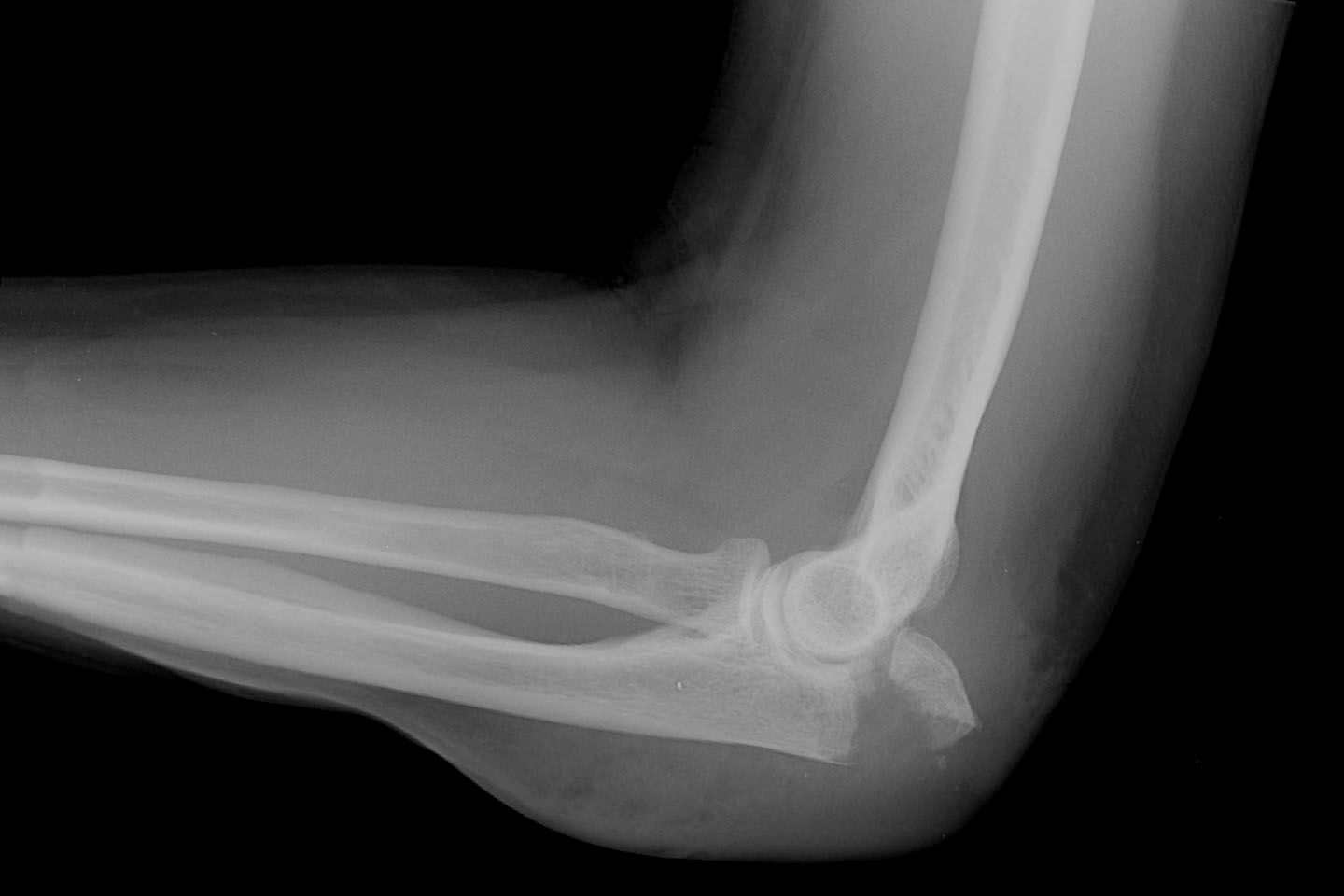
What are the possible complications of a fracture of the ulna?
An ulna fracture can cause complications such as elbow mobility impairment, misalignment of bone fragments, infection, thrombosis, etc. Therefore, it is important to immediately contact a medical specialist if a fracture is suspected.
symptoms, treatment and types of elbow injuries
Contents
- 1 All about elbow fracture: symptoms, types of injuries and anatomy of the elbow
- 1.1 Elbow fracture: what is it?
- 1.2 Types of elbow injuries
- 1.2.1 Elbow fracture
- 1.2.2 Elbow dislocation
- 1.2.3 Elbow sprain
- 1.2.4 Tennis elbow 9 0008
- 1.3 Elbow fracture: symptoms, treatment and types of injury cubit
- 1.3.1 What symptoms indicate a fracture of the elbow joint
- 1.4 Diagnosis and additional tests for a fracture of the elbow joint
- 1.5 Treatment of a fracture of the elbow joint: conservative and surgical
- 1.
 6 Term and recovery after fracture of the elbow joint
6 Term and recovery after fracture of the elbow joint - 1.7 Complications after elbow fracture
- 1.8 Need for rehabilitation after an elbow fracture
- 1.9 How to prevent elbow injury
- 1.10 Treatment of an elbow fracture in children
- 1.10.1 Treatment options
- 1.10.2 Rehabilitation
- 1.10.3 Prevention
- 1.10.3 11 Prevention of elbow injuries in sports
- 1.12 Related videos:
- 1.13 Question -answer:
- 1.13.0.1 What symptoms indicate a fracture of the elbow joint?
- 1.13.0.2 How is an elbow fracture diagnosed?
- 1.13.0.3 What types of elbow injuries can lead to an elbow fracture?
- 1.13.0.4 What are the treatment options for an elbow fracture?
- 1.13.0.5 How long does it take to recover from an elbow fracture?
- 1.13.0.6 What complications can occur with an elbow fracture?
Learn the anatomy of the elbow joint, discuss different types of injuries and their symptoms, to help you properly diagnose and treat an elbow fracture. Essential information for every doctor and patient!
Essential information for every doctor and patient!
The elbow joint is one of the most mobile places in the human body, which bears a significant part of the load during arm movements. That is why elbow injuries are not uncommon, and among them the most complex and dangerous is a fracture of the elbow joint.
A fracture is a break in bone tissue when two or more pieces of bone are displaced relative to each other. This is exactly what happens with an elbow injury, when a collision with a hard surface or a sharp change in direction of movement leads to a rupture of the ligaments and a fracture of the bone.
Symptoms of an elbow fracture may include elbow pain, swelling, bruising, limited movement, and frequent muscle cramps. The most dangerous and complex form of a fracture is a double fracture, when the bone tissue is torn in two places, which can lead to serious impairment of the arm and elbow joint.
However, not all elbow fractures are so severe, and x-rays are often sufficient for diagnosis. After that, having established an accurate diagnosis, treatment can be carried out both by conservative methods and by surgical intervention, depending on the degree of injury and its characteristics.
After that, having established an accurate diagnosis, treatment can be carried out both by conservative methods and by surgical intervention, depending on the degree of injury and its characteristics.
Elbow fracture: what is it?
Elbow fracture is an injury that occurs when one or more bones associated with the elbow joint are torn or attached to a place other than their natural position. This injury can be caused by a variety of causes, including falls, bumps, or twists at the elbow.
Symptoms of an elbow fracture may vary depending on the severity of the injury. Most often, patients complain of pain in the elbow, swelling and bruising, difficulty in moving, and possibly a broken bony process that can be seen or felt under the skin.
Treatment for an elbow fracture depends on the severity of the injury and may include conservative measures such as a cast, pain management, and physical therapy. In more serious cases, surgery may be required to repair the bones and ligaments.
Types of elbow injuries
Fracture of the elbow
Fracture of the elbow disrupts the integrity of the bones of the joint. This can occur when falling onto an outstretched arm or improper bending/extension of the elbow under high tension. The symptoms of a fractured elbow are severe pain, swelling, and impaired movement in the elbow. Immediate medical attention and specialist treatment is needed.
Elbow dislocation
Elbow dislocation causes the joint to move out of its natural position, preventing the normal functioning of the forearm. A dislocation can occur as a result of a blow, a sudden movement, or a fall on an outstretched arm. The symptoms of a dislocation are severe pain and inability to flex/extend the elbow.
Elbow sprain
Elbow sprain is an injury to the ligamentous apparatus that can occur when the ligaments are overstretched or as a result of injury. Symptoms of an elbow sprain are pain, swelling, and limited range of motion in the elbow. Treatment for a sprain includes rest and physical therapy.
Treatment for a sprain includes rest and physical therapy.
Tennis elbow
Tennis elbow is an injury to the tendon that runs through the elbow, which can occur with repetitive hand movements (such as when playing tennis). The symptoms of tennis elbow are pain, tearing sensation, weakness in the forearm. Treatment may include physical therapy, medications, and muscle-strengthening exercises.
- Elbow dislocation
- Elbow fracture
- Elbow sprain
- Tennis elbow
Elbow fracture: symptoms, treatment and types of elbow injuries
Symptoms of an Elbow Fracture
An elbow fracture is a serious injury that can lead to impaired arm function. One of the most striking signs of an elbow fracture is pain, which can be sharp or dull, depending on the severity of the injury.
Elbow fractures often cause swelling and bruising, and may change the shape of the elbow. If a fracture is suspected, attention should be paid to limiting the mobility of the arm, which may not perform the usual movements.
- Acute pain in the elbow
- Swelling and bruising
- Change in the shape of the elbow
- Restriction of arm movement
Symptoms of a fracture of the elbow can occur both simultaneously and gradually, so it is important to see a specialist to establish the correct diagnosis and start effective treatment.
Diagnosis and additional tests for fracture of the elbow
Diagnosis of a fracture of the elbow includes a doctor’s examination, as well as x-rays, magnetic resonance imaging (MRI), and computed tomography (CT).
Additional tests such as blood for infection and inflammation, urinalysis and an electrocardiogram are also done. In the presence of doubtful results of MRI and CT, an additional tissue biopsy is performed.
After carrying out all the necessary diagnostic procedures, the doctor can determine the type of fracture and choose the most appropriate method of treatment.
Elbow fracture treatment: conservative and surgical
Elbow fracture treatment can be conservative or surgical, depending on the severity of the injury. Conservative treatment includes wearing a cast splint for 2 to 6 weeks, restricting arm movement, and using medications such as analgesics and anti-inflammatories. In some cases, physical therapy may be prescribed to reduce pain and restore movement in the joint.
Conservative treatment includes wearing a cast splint for 2 to 6 weeks, restricting arm movement, and using medications such as analgesics and anti-inflammatories. In some cases, physical therapy may be prescribed to reduce pain and restore movement in the joint.
Surgical treatment is used in more severe cases, when there are severe fractures and damage to surrounding tissues. It consists in the restoration of the bone metaphysis and apophyses, as well as the restoration of ligaments and muscle tissues. In some cases, joint arthroplasty may be used. After the operation, regular rehabilitation under the supervision of a doctor is required.
It is important to remember that early visit to the doctor increases the chances of full recovery of joint function and prevents possible complications. If symptoms of a fracture occur, such as swelling, tenderness, limitation of movement, and joint deformity, a traumatologist should be contacted immediately. He will determine the severity of the injury, prescribe the necessary treatment methods and help restore the health and functionality of the elbow joint.
Recovery time after an elbow fracture
An elbow fracture is a serious and traumatic injury that requires a long recovery period. The timing of complete recovery depends on many factors, including the type of fracture, the age of the patient, and overall health.
After this, a gradual increase in the load on the arm begins, in which patients must follow special exercises to strengthen the muscles and joints. It is important to understand that premature loading can lead to re-injury to the joint.
- Complete rest is recommended for the first two weeks after an elbow fracture.
- In the second and third weeks, you can do light exercises to restore mobility of the elbow joint.
- From the fourth to the sixth week, patients can start strengthening exercises.
| The first month after the fracture | The first two weeks – rest, then – light exercises to restore mobility of the elbow joint. |
| Second month after fracture | Strengthening exercises to strengthen muscles and joints. |
| Third month after fracture | Continuation of strengthening exercises and gradual increase in load. |
It is important to remember that every body is different and recovery times may vary depending on many factors. It is also recommended to consult with your doctor about the need to take medications to speed up the recovery of the joint.
Complications after an elbow fracture
An elbow fracture can lead to various complications, depending on the severity of the injury and the effectiveness of the treatment. One of the most common complications is dysfunction of the arm, as the elbow plays an important role in lifting and turning the hand and forearm.
Various infectious complications are also possible, including purulent arthritis, which in turn can lead to joint destruction and loss of function.
After a fracture, regular physiotherapy should be carried out to restore the mobility of the arm and joints, as well as regular consultations with a doctor to monitor the condition of the arm and possible complications.
The need for rehabilitation after a fracture of the elbow joint
A fracture of the elbow joint is a fairly complex injury that requires rehabilitation in order for the patient to return to his active life and fully restore the work of the arm.
The main task of rehabilitation after a fracture of the elbow joint is to restore the mobility of the joint, as well as to restore the strength and flexibility of the muscles of the arm. For this, various methods of treatment are used, including physical therapy, massage and exercise therapy.
It is important to note that rehabilitation after an elbow fracture should begin immediately after the removal of the cast. The sooner the patient begins to undergo rehabilitation, the sooner he will be able to return his full life and work of the hand.
- Basic methods of rehabilitation after a fracture of the elbow joint:
- Physical therapy.
- Medicinal treatment.
- Massage.
- Therapeutic exercise.
In addition, for successful rehabilitation, you must follow the doctor’s recommendations and lead a healthy lifestyle. It is important to avoid strenuous physical activity on the arm for several months after the fracture and eat properly to speed up the recovery process.
How to Prevent Elbow Injuries
The elbow is a multifunctional joint that plays a key role in arm movement. Therefore, it is very important to take care of his health and avoid injury. The following tips will help prevent elbow injuries:
- Warm Up – Warm up the elbow joint and all the surrounding muscles before physical activity.
- Technique Control – If you are playing sports or exercising, make sure you are moving correctly.
 Incorrect technique can lead to injury.
Incorrect technique can lead to injury. - Avoid monotony – repetitive movements can strain the elbow joint. Change position if you are in the same position for a long time.
- Do not overload the joint – about the same load on the elbow joint as if you squeeze the handle in your hand for a long time, it can overload it.
- Choose the right equipment – if you play sports, make sure your tools and equipment are the right fit and set up for you.
By following these tips, you can greatly reduce your risk of elbow injury and keep your joints healthy.
Elbow fracture treatment in children
Treatment options
Elbow fractures in children can be treated conservatively or surgically.
Operative treatment may be necessary in cases where conservative methods have failed to achieve the desired result. This may involve surgical repositioning of bone fragments and fixation by various methods such as screw fixators or bone pins.
Rehabilitation
After treatment of a fracture of the elbow joint in children, it is necessary to conduct a rehabilitation course. It includes physical exercises and stretching exercises aimed at restoring the mobility of the arm and elbow joint. This helps to restore strength and coordination of hand movements and remove residual diseases.
Prevention
To prevent elbow fractures in children, it is recommended to keep them safe, especially when playing sports or other activities, it is also highly recommended to use elbow protectors while cycling or roller skating. Regular stretching exercises also help to increase the flexibility and mobility of the elbow joint.
Elbow Injury Prevention in Sports
Elbow injuries are a common problem among athletes. To prevent their occurrence, you should follow a few rules:
- Warm-up – before starting classes, it is necessary to carry out a gentle warm-up, including rotation and tilt of the elbow joint.

- Proper Technique – Learn to exercise with proper technique, especially when lifting weights and using weights.
- Wearing protection – to reduce the risk of injury, it is recommended to wear joint protection such as handcuffs or elbow pads.
- Overload limit – Don’t cut your training level right away, but it’s important not to go over your limit to avoid overloading the elbow joint.
Following these simple rules can help protect your elbow joint from injury so you can continue playing sports.
Related videos:
Q&A:
What are the symptoms of an elbow fracture?
The most striking manifestations of a fracture are: severe pain in the elbow joint, the presence of edema and / or hematoma at the site of injury, dysfunction of the joint (difficulty or inability to flex or extend it), as well as the appearance of grinding or clicking in the joint.
How is an elbow fracture diagnosed?
An elbow fracture is diagnosed by x-ray, which allows you to see the presence of bone damage and determine the type and extent of the injury.
What types of elbow injuries can lead to an elbow fracture?
Elbow fractures can be caused by injuries of varying severity, such as a fall on the arm, a blow, a dislocation or sprain of the joint.
What methods of treatment are used for a fracture of the elbow joint?
Treatment options for elbow fractures depend on the severity of the injury and may include a cast, surgery, physical therapy, and massage.
How long does it take to recover from an elbow fracture?
The recovery period for an elbow fracture can take anywhere from weeks to months, depending on the extent of the injury, the age and health of the patient, and the procedures and treatments followed after the injury.
What complications can occur with an elbow fracture?
An elbow fracture can cause complications such as joint dysfunction, pain, joint deformity and future limitations.

 The reason why these fractures are common is that they’re not protected by muscles, making them exposed. Also, depending on the impact that caused the fracture, its anatomy increases the odds that it will be the part of your elbow that takes the full brunt of the force.
The reason why these fractures are common is that they’re not protected by muscles, making them exposed. Also, depending on the impact that caused the fracture, its anatomy increases the odds that it will be the part of your elbow that takes the full brunt of the force.


 This is done under general anesthesia.
This is done under general anesthesia. 1 Fracture of the ulna: what is it?
1 Fracture of the ulna: what is it? 11.0.4 How is a fracture of the ulna treated?
11.0.4 How is a fracture of the ulna treated? The pain may be intense and get worse when you try to move.
The pain may be intense and get worse when you try to move.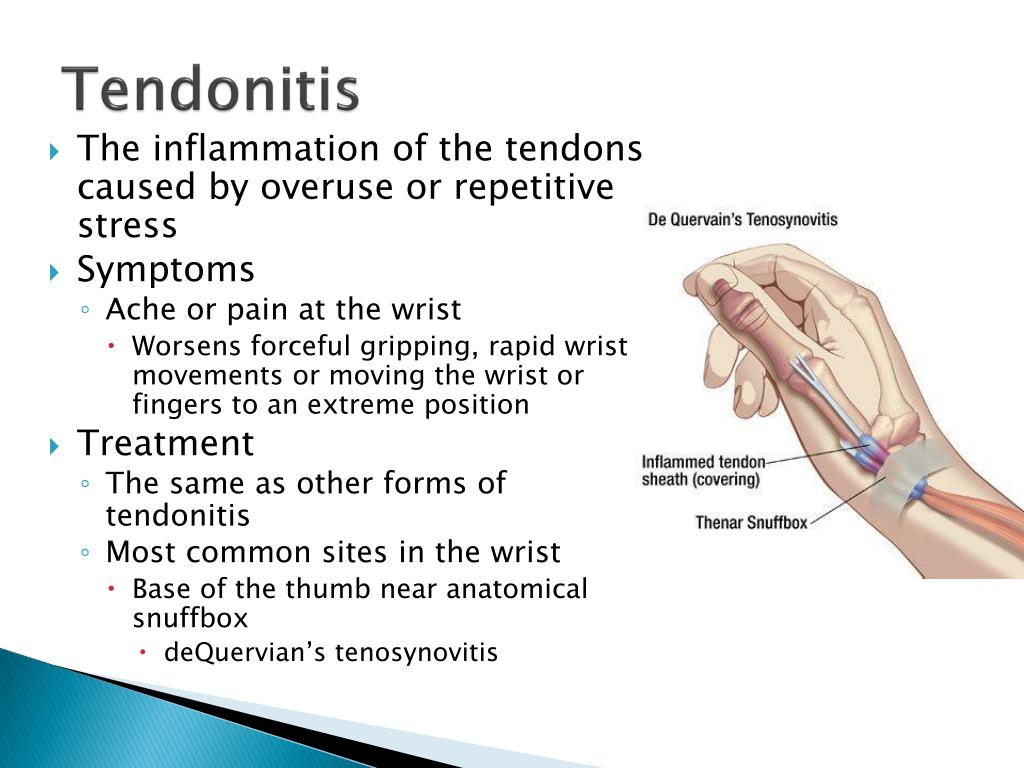
 6 Term and recovery after fracture of the elbow joint
6 Term and recovery after fracture of the elbow joint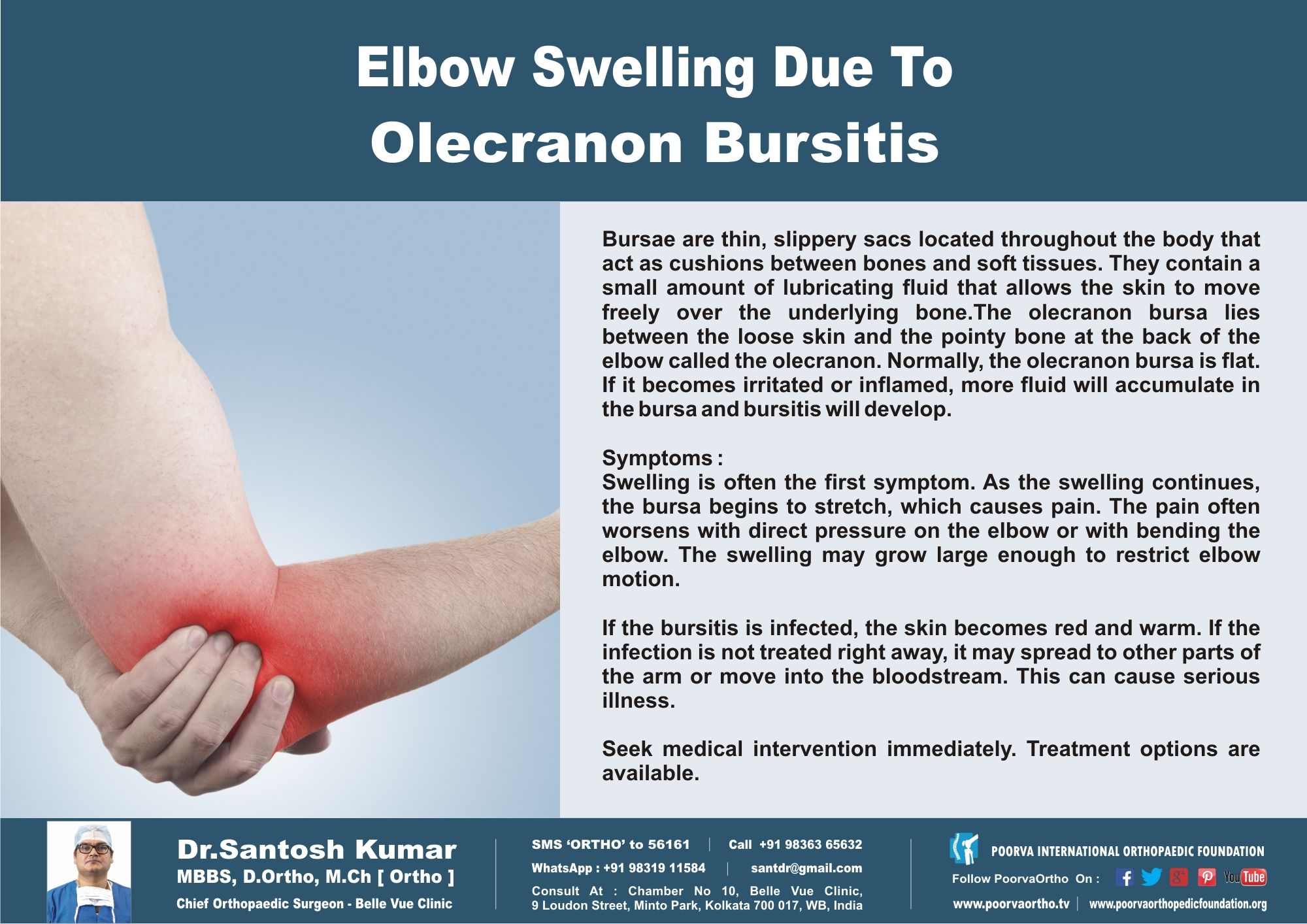 Incorrect technique can lead to injury.
Incorrect technique can lead to injury.